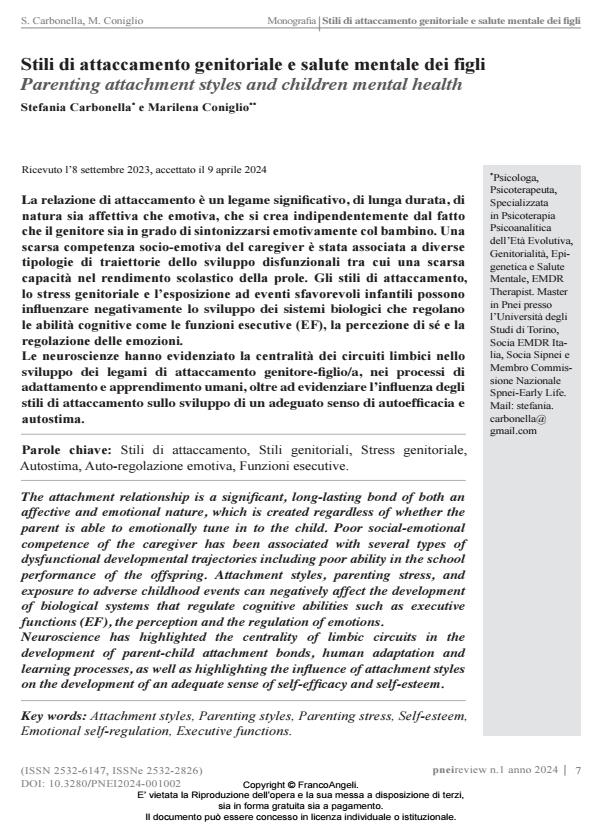Parenting attachment styles and children mental health
Journal title PNEI REVIEW
Author/s Stefania Carbonella, Marilena Coniglio
Publishing Year 2024 Issue 2024/1
Language Italian Pages 15 P. 7-21 File size 1143 KB
DOI 10.3280/PNEI2024-001002
DOI is like a bar code for intellectual property: to have more infomation
click here
Below, you can see the article first page
If you want to buy this article in PDF format, you can do it, following the instructions to buy download credits

FrancoAngeli is member of Publishers International Linking Association, Inc (PILA), a not-for-profit association which run the CrossRef service enabling links to and from online scholarly content.
The attachment relationship is a significant, long-lasting bond of both an affective and emotional nature, which is created regardless of whether the parent is able to emotionally tune in to the child. Poor social-emotional competence of the caregiver has been associated with several types of dysfunctional developmental trajectories including poor ability in the school performance of the offspring. Attachment styles, parenting stress, and exposure to adverse childhood events can negatively affect the development of biological systems that regulate cognitive abilities such as executive functions (EF), the perception and the regulation of emotions. Neuroscience has highlighted the centrality of limbic circuits in the development of parent-child attachment bonds, human adaptation and learning processes, as well as highlighting the influence of attachment styles on the development of an adequate sense of self-efficacy and self-esteem.
Keywords: Attachment styles, Parenting styles, Parenting stress, Self-esteem, Emotional self-regulation, Executive functions.
Stefania Carbonella, Marilena Coniglio, Stili di attaccamento genitoriale e salute mentale dei figli in "PNEI REVIEW" 1/2024, pp 7-21, DOI: 10.3280/PNEI2024-001002